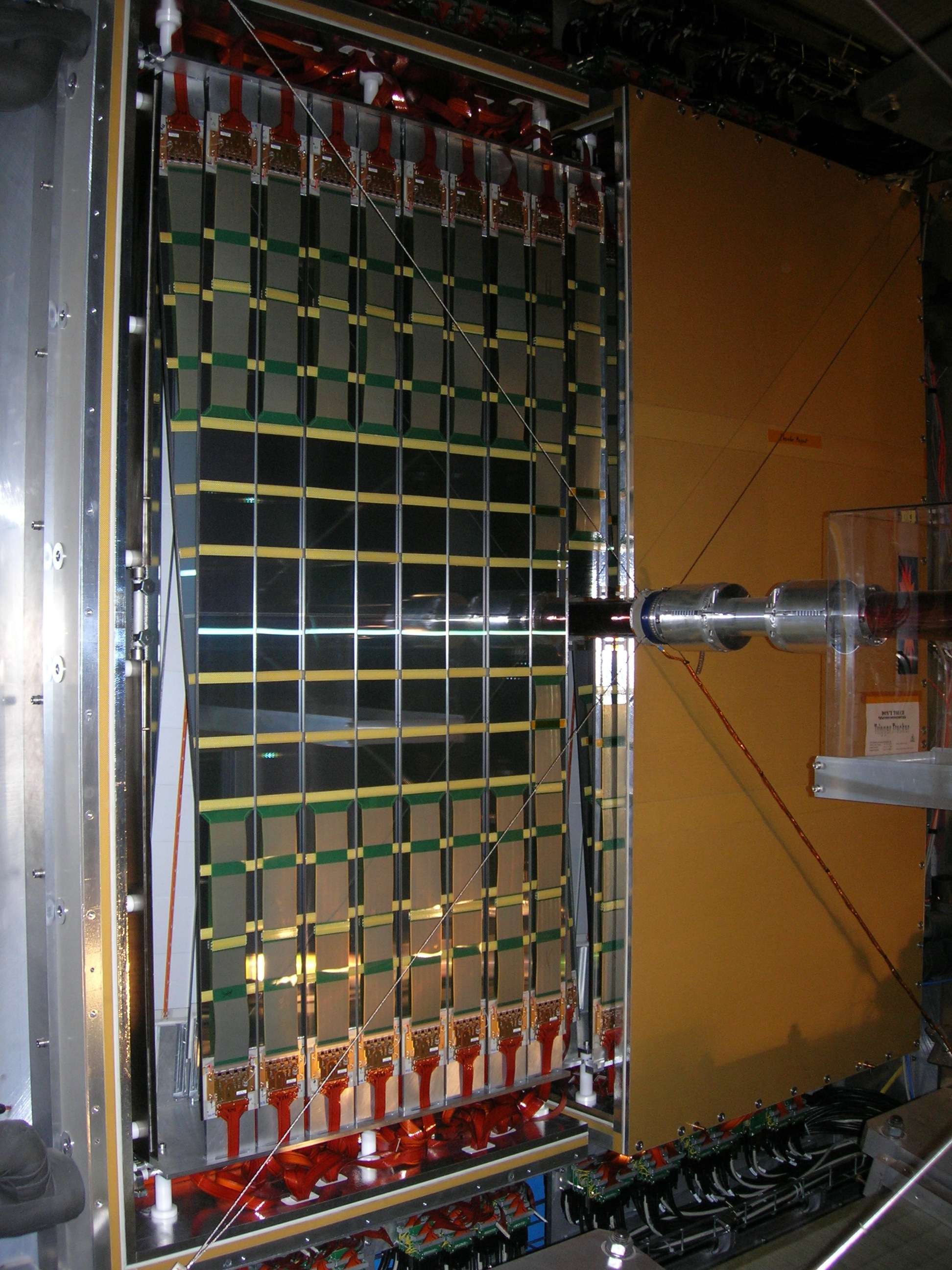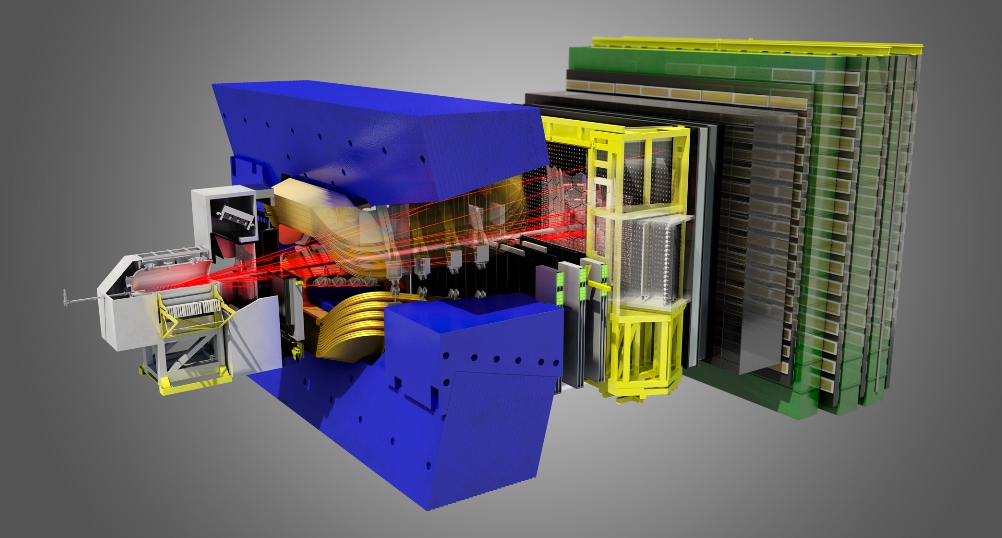Detector and upgrades
The LHCb experiment (see the illustration above) has been optimized for the study of hadrons containing b or c quarks. These hadrons are very short lived and travel only a few mm before they decay. We detect them by measuring their long-lived decay products. The LHCb detector consists of different components ("sub-detectors"), which are used to measure different properties of these long-lived decay products: their point of origin and their direction of flight, their momentum, their energy and the type of particle. Combining the information from all sub-detectors, we are able to reconstruct what happened in the collision of two protons in the LHC: was a b or c hadron produced in the collision? Which type of b or c hadron was produced? How long did it live before it decayed? In which particles did it decay? What are the opening angles between the decay products, what are their momenta? Collecting and analysing many decays, we can study the properties of different types and decay modes of b or c hadrons and compare them to Standard Model predictions. The processes we are most interested in are extremely rare and this implies that we need to operate the experiment over many years and analyze a huge number of proton-proton collisions if we want to perform precise measurements.The precision of our measurements is limited by systematic and statistical uncertainties. We can reduce systematic uncertainties by studying and understanding the properties of our detector and by using clever analysis techniques. We are good at this and almost all our measurements are limited by their statistical uncertainty. The only way to reduce statistical uncertainties is to increase our data sample, which means to analyse a larger number of proton-proton collisions. Statistical uncertainties scale with the square root of the sample size, so we have to collect data from four times as many proton-proton collisions if we want to reduce the statistical uncertainty by a factor of two. This is why we are making use of the second long shutdown of the LHC ("LS2") in 2019-2021 to install a comprehensive upgrade of the LHCb detector, which will allow us to collect data at about five times higher proton-proton collision rate and with better efficiency. A second upgrade, aiming at another factor of five improvement in collision rate, is already envisaged.
Our contributions to the detector and its upgrades

The reconstruction of the trajectories of long-lived charged particles and the precise measurement of their momenta is a key ingredient for the success of the LHCb experiment. The LHCb tracking system consists of a Vertex Locator (VELO) surrounding the proton-proton collision region, a single planar detector station upstream of the spectrometer magnet and three planar detector stations downstream of the magnet. The bending of the trajectory of a charged particle in the magnetic field between the upstream and downstream detector stations allows to measure the momentum of the particle.
The tracking station upstream of the magnet consists of four layers of silicon micro-strip detectors. The picture above shows part of the detector that operated very successfully from 2010 till 2018. It was called TT for "Tracker Turicensis" (Zurich tracker) and it was designed and made by our group here in Zurich. As part of the ongoing LHCb upgrade, this detector is being replaced by a new silicon micro-strip detector, called UT for "Upstream Tracker". The UT has faster readout than the TT as well as improved radiation hardness and finer strip granularity to cope with the higher density of charged particles caused by the five times higher proton-proton collision rate. We contribute to the development and commissioning of this detector, together with groups from China, Italy, Poland, and the US. In particular, we are responsible for the development of hardware and firmware for the readout of the detector.
The tracking stations downstream of the magnet used two different detector technologies: silicon micro-strips for the region of highest particle density in the innermost part of each tracking station and straw drift-tubes for the outer regions.We contributed to the silicon micro-strip detectors, together with our colleagues at EPFL and three groups in Germany, Spain and Italy. As part of the ongoing LHCb upgrade, the downstream tracking stations are being replaced by a detector using scitillating-fibre technology to cover the full acceptance of the experiment. Our colleagues at EPFL contribute to the development of this detector. For the second LHCb upgrade, we envisage to return to a layout with different detector technologies in the outer and inner regions of each tracking station: while scintillating-fibres technology should still be suitable for the outer regions of each station, a new detector with finer granularity will be required to cover the innermost regions. Our group participates in simulation studies to optimize the layout of the tracking stations and in R&D for a new silicon pixel detector for the inner regions. We are investigating so-called HV-MAPS, Monolithic Active Pixel Sensors implemented in the commercial HV-CMOS process. We collaborate on this project with colleagues in Germany and the UK.

![[New Group Photo from Virtual retreat 2021]](/dam/jcr:da62b570-f5e7-4efe-bde8-d81d50e4d137/virtual_photo.png)